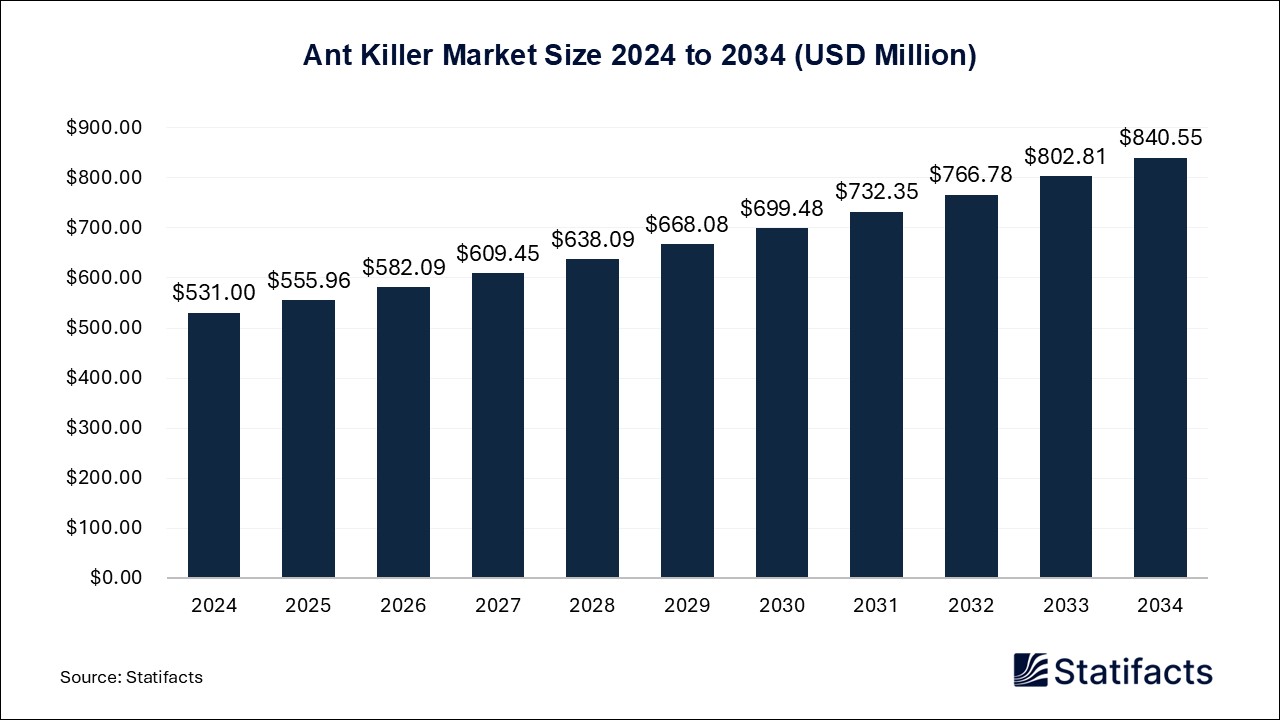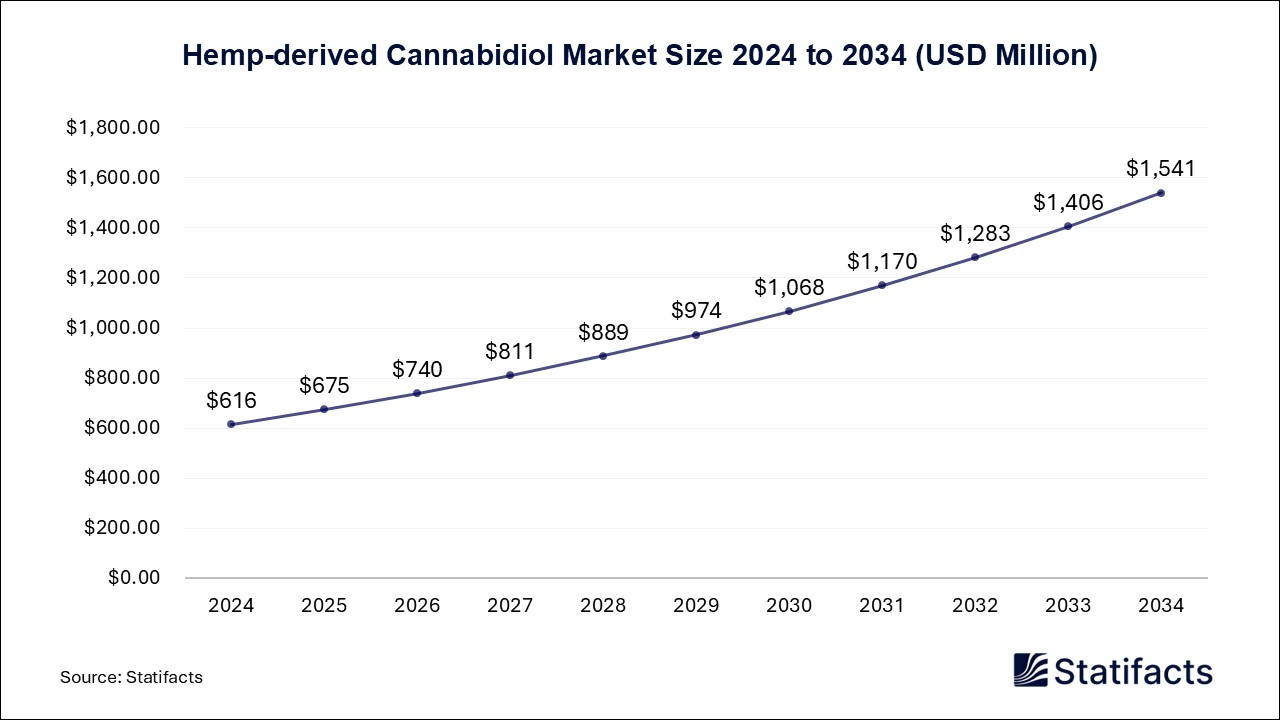Last Updated: 03 Jul 2025
Source: Statifacts
By clicking “Accept All Cookies” you agree to the storing of cookies on your device to enhance site navigation, analyze site usage, and assist in our marketing efforts.
Privacy PolicyThe global joint prosthetics market size accounted for USD 22.02 billion in 2024 and is predicted to touch around USD 43.77 billion by 2034, growing at a CAGR of 7.11% from 2025 to 2034.
| Industry Worth | Details |
| Market Size in 2025 | USD 23.55 Billion |
| Market Size by 2034 | USD 43.77 Billion |
| Market Growth Rate from 2025 to 2034 | CAGR of 7.11% |
A joint prosthesis pertains to a removable apparatus, usually made of acrylic resin, utilized to restore oral functions as well as stimulate growth mediated by occlusion forces in children, mostly around 3-4 years old. It assists in restoring the vertical dimension of occlusion and can be utilized in conjunction with orthopaedic apparatus for maxillary expansion. Prosthetic joints can remarkably reduce or eliminate joint pain. They can restore the range of motion and permit easier movement. Patients can usually return to activities they were previously unable to perform.
"Our team has been working diligently to prepare this technology for patient treatments. The AMF technology meets a significant need for non-surgical alternatives for patients suffering from chronic or acute PJI that risk their mobility. As patients live longer with their artificial joints, the chance of infection has increased along with the number of patients having multiple implants in their lifetime."
“Medacta has built upon the excellent long-term results of its fully HA-coated femoral stems by adding a proximal MectaGrip coating to the Quadra-P stem system,' said John Masonis, M.D., of OrthoCarolina Hip & Knee Center in Charlotte, North Carolina (U.S.), one of the Quadra-P designers. 'The MectaGrip coating allows for more proximal load transfer and provides a mechanically stronger bone-to-implant interface. The single system expands the proven stability of the cementless Quadra by adding the cementless with collar and updated cemented options. This gives me and other surgeons a stem system that can address different femoral bone morphologies among a varying patient population.’’
AI permits prosthetics to forecast user intentions based on patterns in past behavior or muscle activity. For instance, a myoelectric prosthetic hand can predict whether the consumer wants to perform a grip, pinch, or open-hand motion derived from subtle cues. AI excels in handling the intricate mechanics of developed prosthetics, mainly for devices such as multi-articulating hands. These hands need precise coordination of multiple joints and elements to perform tasks such as sewing, typing, or gripping irregularly shaped objects.
The joint prosthetics market is experiencing significant growth, with North America maintaining its position as the dominant region while Europe emerges as the rapidly growing market. The Asia Pacific region is projected to be the fastest-growing in the joint prosthetics market during the forecast period.
North America
North America dominated the global joint prosthetics market in 2024. North America boasts a well-known healthcare system with developed facilities, supporting the requirement for prosthetic devices. A huge number of people in the region suffer from osteoarthritis, contributing to an increased need for joint replacements.
Europe
Europe is experiencing rapid growth in the joint prosthetics market during the forecast period. The rising number of road accidents is a major contributor to the demand for prosthetic devices, as these accidents usually result in limb amputations. Innovations in prosthetic materials, design, and functionality are making apparatuses more effective and user-friendly, thus stimulating market expansion.
Asia Pacific is projected to be the fastest-growing joint prosthetics market during the forecast period. Increased knowledge of prosthetic solutions and developments in medical technology are also playing a vital role. Rising rates of conditions such as diabetes and osteoarthritis, which often contribute to joint issues, are driving market growth.
Companies are employing strategies such as introducing new and developed products, infusing 3D printing technologies for customized prosthetics, and forming public-private collaborations to gain a competitive edge.
Medtronic plc is a medical technology firm that designs, manufactures, develops, and markets medical apparatus and solutions. The firm's major activities include research, manufacturing, design, and sales of biomedical engineering products. Medtronic also offers biologic solutions for the orthopedic and dental markets.
Zimmer Biomet Holdings Inc. is a medical device firm that tackles musculoskeletal healthcare. Its products and solutions help in treating patients suffering from injuries or disorders of bones, joints, and supporting soft tissues.
Exactech Inc. is a medical device firm that develops and markets orthopedic implant apparatus and related surgical equipment. The firm's products include shoulder replacement products, active intelligence, knee replacement products, ExactechGPS systems, hip replacement products, and infection-related solutions, among others.
Published by Kesiya Chacko
Last Updated: 03 Jul 2025
Source: Statifacts
Last Updated: 03 Jul 2025
Source: Statifacts
| Subsegment | 2024 | 2025 | 2026 | 2027 | 2028 | 2029 | 2030 | 2031 | 2032 | 2033 | 2034 |
|---|---|---|---|---|---|---|---|---|---|---|---|
| Osteoarthritis | 13,620.50 | 14,506.00 | 15,453.10 | 16,466.30 | 17,550.50 | 18,709.10 | 19,947.60 | 21,275.50 | 22,699.90 | 24,223.60 | 25,868.20 |
| Rheumatoid Arthritis | 2,406.40 | 2,545.40 | 2,692.80 | 2,849.20 | 3,015.10 | 3,190.80 | 3,376.80 | 3,574.60 | 3,784.80 | 4,007.40 | 4,245.70 |
| Post-Traumatic Arthritis | 1,866.20 | 2,018.20 | 2,182.90 | 2,361.50 | 2,555.10 | 2,764.80 | 2,992.00 | 3,238.70 | 3,506.70 | 3,797.20 | 4,114.40 |
| Avascular Necrosis | 1,461.50 | 1,574.30 | 1,696.30 | 1,828.20 | 1,970.80 | 2,124.80 | 2,291.20 | 2,471.40 | 2,666.60 | 2,877.70 | 3,107.70 |
| Congenital Disorders | 987.10 | 1,078.30 | 1,177.70 | 1,286.20 | 1,404.40 | 1,533.30 | 1,673.60 | 1,826.90 | 1,994.30 | 2,176.60 | 2,376.70 |
| Fractures and Dislocations | 830.10 | 901.50 | 979.00 | 1,063.30 | 1,154.90 | 1,254.40 | 1,362.50 | 1,480.10 | 1,608.20 | 1,747.30 | 1,899.60 |
| Revision Surgeries (Failed Prior Implants) | 843.20 | 927.90 | 1,020.70 | 1,122.20 | 1,233.40 | 1,354.80 | 1,487.60 | 1,633.00 | 1,792.30 | 1,966.40 | 2,157.90 |
Last Updated: 03 Jul 2025
Source: Statifacts
| Subsegment | 2024 | 2025 | 2026 | 2027 | 2028 | 2029 | 2030 | 2031 | 2032 | 2033 | 2034 |
|---|---|---|---|---|---|---|---|---|---|---|---|
| Osteoarthritis | 13,620.50 | 14506 | 15,453.10 | 16,466.30 | 17,550.50 | 18,709.10 | 19,947.60 | 21,275.50 | 22,699.90 | 24,223.60 | 25,868.20 |
| Rheumatoid Arthritis | 2,406.40 | 2,545.40 | 2,692.80 | 2,849.20 | 3,015.10 | 3,190.80 | 3,376.80 | 3,574.60 | 3,784.80 | 4,007.40 | 4,245.70 |
| Post-Traumatic Arthritis | 1,866.20 | 2,018.20 | 2,182.90 | 2,361.50 | 2,555.10 | 2,764.80 | 2992 | 3,238.70 | 3,506.70 | 3,797.20 | 4,114.40 |
| Avascular Necrosis | 1,461.50 | 1,574.30 | 1,696.30 | 1,828.20 | 1,970.80 | 2,124.80 | 2,291.20 | 2,471.40 | 2,666.60 | 2,877.70 | 3,107.70 |
| Congenital Disorders | 987.10 | 1,078.30 | 1,177.70 | 1,286.20 | 1,404.40 | 1,533.30 | 1,673.60 | 1,826.90 | 1,994.30 | 2,176.60 | 2,376.70 |
| Fractures and Dislocations | 830.10 | 901.50 | 979 | 1,063.30 | 1,154.90 | 1,254.40 | 1,362.50 | 1,480.10 | 1,608.20 | 1,747.30 | 1,899.60 |
| Revision Surgeries (Failed Prior Implants) | 843.20 | 927.90 | 1,020.70 | 1,122.20 | 1,233.40 | 1,354.80 | 1,487.60 | 1633 | 1,792.30 | 1,966.40 | 2,157.90 |
Joint prosthetics are artificial implants used to replace damaged joints, commonly in the hip, knee, or shoulder. They help restore mobility and reduce pain caused by arthritis, injuries, or degenerative joint diseases.
The market is growing due to an aging population, rising prevalence of osteoarthritis, advancements in implant materials, and increased demand for minimally invasive joint replacement surgeries.
The most common prosthetics include total and partial hip, knee, and shoulder replacements. Innovations like 3D-printed and customized implants are gaining popularity for better fit and performance.
Key challenges include high implant costs, risk of post-surgical complications, implant recalls, and the need for skilled surgeons to perform joint replacement procedures effectively.
Leading companies include Zimmer Biomet, Stryker Corporation, Johnson & Johnson (DePuy Synthes), Smith & Nephew, and B. Braun, all offering a range of advanced joint replacement solutions.
To get full access to our Market Insights, you need a Professional Account or a Business Suite.

You will receive an email from our Business Development Manager. Please be sure to check your SPAM/JUNK folder too.

You will receive an email from our Business Development Manager. Please be sure to check your SPAM/JUNK folder too.

Our customers work more efficiently and benefit from



